In June 2001, the third and thus youngest national park in Iceland was established in West Iceland - Snaefellsjokull National Park.
Snaefellsjokull National Park was established to protect the unique nature of the area and important historical remains from ancient times. The national park also aims to make traveling in the region possible and accessible to people. It is the only Icelandic national park that extends from the top of a mountain to the coast. The national park is named after its main attraction: the Snaefellsjokull glacier.
There are two visitor centers where guests can get information about the national park from May to September. The center in Malarrif has an interesting exhibition about nature and fishing relics. The Hellissand visitor center was reopened in 2023 and in addition to information, there is also an exhibition hall and a small restaurant where visitors can get refreshments.
A map shows which hikes can be made in the national park. There is also a wide range of varied excursions to the national park, such as a horseback riding tour lasting several days or a hike across the Snaefellsjokull glacier.
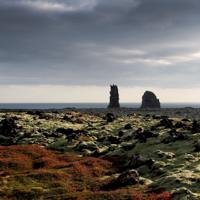
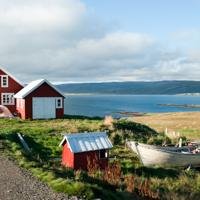
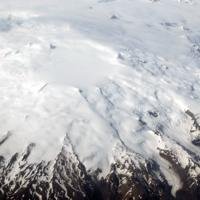
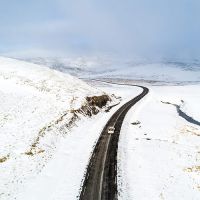
Location & Approach
The national park is located at the tip of the Snaefellsnes peninsula in the west of Iceland and covers about 170 km². The southern border of the park runs to Háahraun in the Dagverðará region and the northern border of the park extends to Gufuskálat.
Road No. 574 runs once through the national park and the neighboring nature reserves. It can be driven from the south as well as from the north. From the capital Reykjavik it takes about 3 hours by car for the 200 km.
Historical significance
Archaeological findings indicate that the area where the national park is located today was inhabited 1100 years ago. For example, the Forni Saxhóll farm, Berutóftir, and Írskubúðir date from this period. Near Gufuskálar there are several dome-like buildings of unknown origin, estimated to be between 500 and 700 years old. This makes them among the oldest known fishing relics in all of Scandinavia.
One of the main reasons for the settlement of the area is the location by the sea and the resulting opportunities for fishing. In the 13th century, the population in the area around the glacier grew due to the flourishing fishing. In fact, in the 18th century, this was one of the most densely populated areas in all of Iceland. In the 19th century, fishing numbers declined due to technological advances in the industry.
All the villages around the national park, Hellisandur, Rif, and Ólafsvík included, were all fishing centers and even today these communities still have thriving harbors and a vibrant community.
Geological significance
The lowland on the coast of the National Park is mostly covered by lava that flowed from the glacier or nearby craters. It is overgrown with moss, but there are also some protected hollows where a variety of flowering plants grow. The eponymous glacier towers majestically over the park and all around you can see the results of past volcanic activity. On the northern side of the park is the Eysteinsdalur valley surrounded by steep mountains.
On the Snaefellsnes Peninsula geological formations from almost all eras of Iceland's past can be found. In the Snaefellsjokull system of volcanoes, individual eruptions can be traced from both the Ice Age and more recent days. The more conspicuous formations were mostly formed in the geologically modern period, i.e. since the last ice age in 1890. North of the glacier, around Bárdarkista, are some hills composed of volcanic palagonite tuff and eruptions formed under the glacier or the sea surface.
The lava that characterizes the landscape of the peninsula can be divided into two different types: rough, fissured lava and smooth, pulpy lava. Most of the lava comes from eruptions of the volcano under the glacier, the summit crater, or from secondary craters on the flanks of the mountain. In addition to the diverse lava formations, there are also many lava caves in the region, but on the recommendation of the national park management, these should only be entered with an experienced guide. Other small volcanic craters surrounded by lava in the area are Purkhólar, Hólahólar, Saxhólar, and Ondverdarneshólar.
Flora & Fauna
Despite the porous soil in the national park, there is a diverse flora. Along the coast, many plants and colorful algae grow in crystal clear pools and even the lava is covered with a thick layer of moss in places. In sheltered areas, you can also find flowering plants and in late summer numerous ripe berry species such as blueberries and huckleberries.
Due to the long coastline, several species of birds live and breed in the National Park. The most common bird species are the guillemot, the razorbill, the fulmar, and the shag. In addition, nesting sites of different species of gulls can be found on almost every rock. In the interior of the peninsula can be observed, among others, golden plovers, whimbrels, meadow pipits, gray buntings, and wheatears.
In addition to the various bird species, foxes, minks and field mice also inhabit the region. On the coast, seals, grey seals, and also small whale species such as killer whales, minke whales, and porpoises can also be spotted.
Sights around the National Park
Snaefellsjokull Glacier:
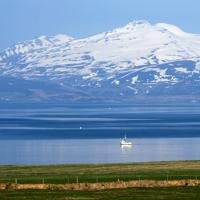
The glacier is indisputably the main attraction of the national park and is enthroned in the center. It is often referred to as the "King of the Icelandic Mountains" because, with its 1,446-meter height, it has long been counted as the highest mountain in the country. The mountain is an active stratovolcano formed from many eruptions over the last 800,000 years. The 200-meter-deep crater is filled with ice and surrounded by snow-covered cliffs. In recent years, the glacier has shrunk to a size of 11 square kilometers. The last eruption occurred about 1,800 years ago, forming, among other things, the Háahraun lava field.
Djúpalónssandur:
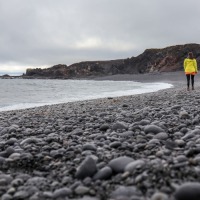 This beautiful black pebble beach is one of the few places where you can walk from the meter-high dark cliffs directly to the sea. The pebbles are popularly called the "pearls of Djúpalón". From the sea rises a series of mysterious rocks, around which some legends revolve. On the beach, there are also the remains of a shipwreck that ran aground in 1948, in keeping with the beach's past. For many years ago Djupalonssandur and also the rest of Dritvik Bay was an important fishing station. At its peak, up to 60 ships started their trips from there and about 400 people were living in the area. The ruins of the old buildings can still be seen and admired today. If you walk along the beach for about a kilometer, you will come to a series of stones: the so-called strength test stones. With these stones of different weights, applicants of the fishing boats had to test their strength. Applicants who could lift the heaviest stone, the "Fullsterkur" (full-strength stone) weighing 154 kg, were assured a place in the boat. The 100 kg "Hálfsterkur" (half-strongman), the 54 kg "Hálfdrættingur" (custom maker), and 23 kg "Amlódi" (weakling). The stones had to be thrown on a rock to pass the test. This rock is still on site today, but due to wear it is much lower than it used to be.
This beautiful black pebble beach is one of the few places where you can walk from the meter-high dark cliffs directly to the sea. The pebbles are popularly called the "pearls of Djúpalón". From the sea rises a series of mysterious rocks, around which some legends revolve. On the beach, there are also the remains of a shipwreck that ran aground in 1948, in keeping with the beach's past. For many years ago Djupalonssandur and also the rest of Dritvik Bay was an important fishing station. At its peak, up to 60 ships started their trips from there and about 400 people were living in the area. The ruins of the old buildings can still be seen and admired today. If you walk along the beach for about a kilometer, you will come to a series of stones: the so-called strength test stones. With these stones of different weights, applicants of the fishing boats had to test their strength. Applicants who could lift the heaviest stone, the "Fullsterkur" (full-strength stone) weighing 154 kg, were assured a place in the boat. The 100 kg "Hálfsterkur" (half-strongman), the 54 kg "Hálfdrættingur" (custom maker), and 23 kg "Amlódi" (weakling). The stones had to be thrown on a rock to pass the test. This rock is still on site today, but due to wear it is much lower than it used to be.
Vatnshellir:
Vatsnahellir is among one of the oldest lava tunnels in all of Iceland. The tunnel was formed about 8000 years ago during a volcanic eruption and was opened to visitors in 2009. Today, a spiral staircase leads inside the tunnel, making it easier to enter. However, one is not allowed to enter the cave without an experienced guide, so in the summer many tours offer a tour of the cave. Although the entrance to the tunnel is quite easy, the uneven and usually poorly lit floor makes the visit difficult.
Saxholl Crater:
The crater is located just off the side of Road 574. A metal staircase leads to the top of the crater, revealing a fantastic view over the huge Neshraun lava flows and the surrounding area.
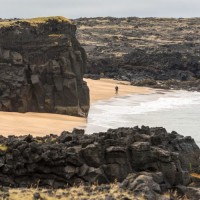
Skardsvík:
The golden sandy beach of Skardsvik is a found change from the many black lava beaches in Iceland. The water at the beach can have a bright turquoise color and practically invites you to go into the water. But you should be careful because the currents and waves on the beach are very strong and can be dangerous.
Malarrif Lighthouse:
The 24-meter-high lighthouse on the cliffs near Londranger was built in 1946 and stands right by the visitor center at the southernmost point of the peninsula. The lighthouse that stands today replaced the one first built in 1916 and has been guiding ships around the lower tip of the peninsula ever since. Unfortunately, the lighthouse cannot be visited.
Nearby
In the vicinity of the national park, there are several villages, in addition to the other nature reserves of Búðahraun, Arnarstapi, Hellnar, and the natural monument of Bárðarlaug. Arnarstapi has 150 inhabitants and is still a lively fishing village. The cliff where the village is located is home to numerous sea birds and has many beautiful hiking trails where you can explore the surrounding nature. Hellnar is located in a picturesque bay at the foot of the glacier, making it an ideal stopover before a glacier hike or simply to admire the unique rock formations of Gatklettur. Another sight nearby is the black church of Buðir - Buðakirkja. The church is one of the oldest wooden churches in the country and stands in the now almost abandoned village. It is located on the edge of an impressive old lava field and is worth a visit. Not to be forgotten is the famous Kirkjufell mountain and its waterfall Kirkjufellfoss, which can be found near Grundafjordur. The mountain is not considered the most beautiful mountain in Iceland for nothing and is considered one of the most photogenic places in the country.
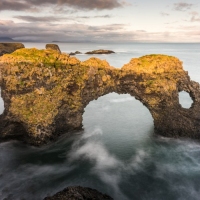
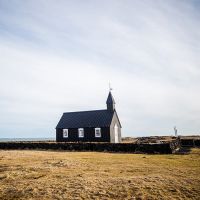
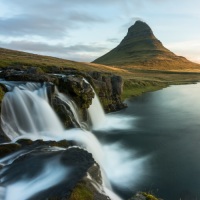
A wide range of excursions to Snaefellsjokull National Park can be booked directly with us - just contact us! For more ideas, take a look at our selection of excursions. Find inspiration for your next round trip to Iceland in our trip overview.
